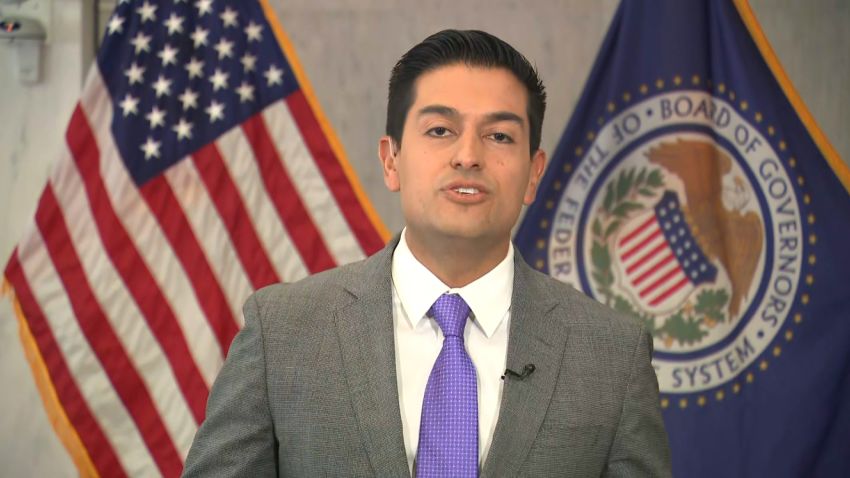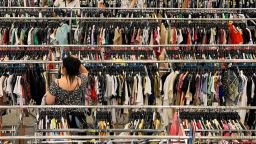The Federal Reserve could pull back on the pace of its aggressive rate hikes as soon as December, Fed Chairman Jerome Powell said Wednesday at an economic forum.
“The time for moderating the pace of rate increases may come as soon as the December meeting,” he said in remarks at the Hutchins Center on Fiscal and Monetary Policy, his last public appearance before the central bank enters a blackout period ahead of its December 13-14 policymaking meeting.
“Despite some promising developments, we have a long way to go,” Powell said, noting that the Fed has “not seen clear progress” on decades-high inflation plaguing the economy.
Investors have been closely watching for any indication that the Fed might slow or even pause its punishing schedule of rate hikes — the much-talked-about “pivot” that would release the brakes the central bank slammed on the economy.
But Fed officials have ramped up their rhetoric in recent weeks to disseminate the message that there’s much more work to do, and will forge ahead with rate increases — albeit smaller — until the current bout of decades-high inflation shows signs of abating.
St. Louis Federal Reserve President James Bullard warned this week at a virtual event that the stock market is underpricing the risk of a continually aggressive Fed, and New York Federal Reserve President John Williams told the Economic Club of New York on Monday that inflation remains the “No. 1 economic concern across the globe,” citing underlying inflation in the service sector as “the most challenging” aspect of the battle.
The Fed has increased its benchmark lending rate six times this year in an attempt to discourage borrowing, cool the economy and bring down historically high inflation that peaked at 9.1% over the summer and has since slowed to 7.7%, according to the latest Consumer Price Index.
Yet despite that aggressive action — which would normally impact the labor market as companies pull back on their spending — the job landscape has so far remained resilient. After millions of people were thrown out of work at the start of the pandemic, the economy has since regained all lost jobs, adding hundreds of thousands more positions each month and maintaining an unemployment rate that is close to a half-century low.
While that’s good news for workers, the tight labor market puts the Fed in a tricky position, since a shortage of staff means employees can essentially name their price, adding to inflationary pressures. The most recent Job Openings and Labor Turnover Survey showed Wednesday that there were almost 1.7 jobs available for every job seeker in October.
The decline in job openings is a positive development, Powell said Wednesday. While the relationship between job openings and unemployment is a “very fraught one,” he noted, he and other Fed officials believe there’s a possibility that the labor market could come back into balance via a decline in job openings as opposed to a spike in job losses.
“We’ve seen that so far, but it’s way too early,” he said.
A course of quick correction
The Fed is stuck tackling a supply-side inflation problem for which it has only blunt tools. Demand for goods surged in the United States last summer as consumers began to emerge from the darkest days of lockdowns and layoffs — but the global supply chain has taken longer to recover, leading to bottlenecks, a shortage of goods, and price surges.
Resisting calls to address runaway inflation and dismissing it as “transitory,” the Fed held on to its historically low interest rates, unwilling to risk short-circuiting any economic growth spurt. But as demand continued to surge, it became clear that inflation had quickly become the foremost concern for the central bank.
The Fed started on a course of quick correction in March, “front-loading” the economy with hefty interest rates, first hiking its benchmark lending rate by its usual quarter of a point, then by half a point and then rolling out four massive three-quarter-point hikes in a row.
Yet even this unprecedented action, unheard of in the modern central banking era, has yet to make a significant dent in US inflation. And the rate hikes could be doing more harm than good. Critics including Senators Elizabeth Warren and Sherrod Brown have warned that the Fed’s “extreme” actions could “throw millions of Americans out of work.” Additionally, the housing market has already slowed dramatically, with mortgage rates recently topping 7% and home sales falling for nine straight months.
Since rate hikes can take months, even years, to flow through the economy, the Fed now appears to be adopting a “lower and slower” model of smaller rate hikes over a longer period. Ideally, that approach will lead to the proverbial “soft landing,” reining in inflation while avoiding recession or significant layoffs.
“I do continue to believe that there’s a path to a soft or softish landing,” Powell said Wednesday. “I think it’s still achievable.”
“It is likely that restoring price stability will require holding policy at a restrictive level for some time,” he added. “History cautions strongly against prematurely loosening policy. We will stay the course until the job is done.”





